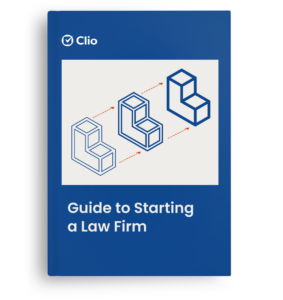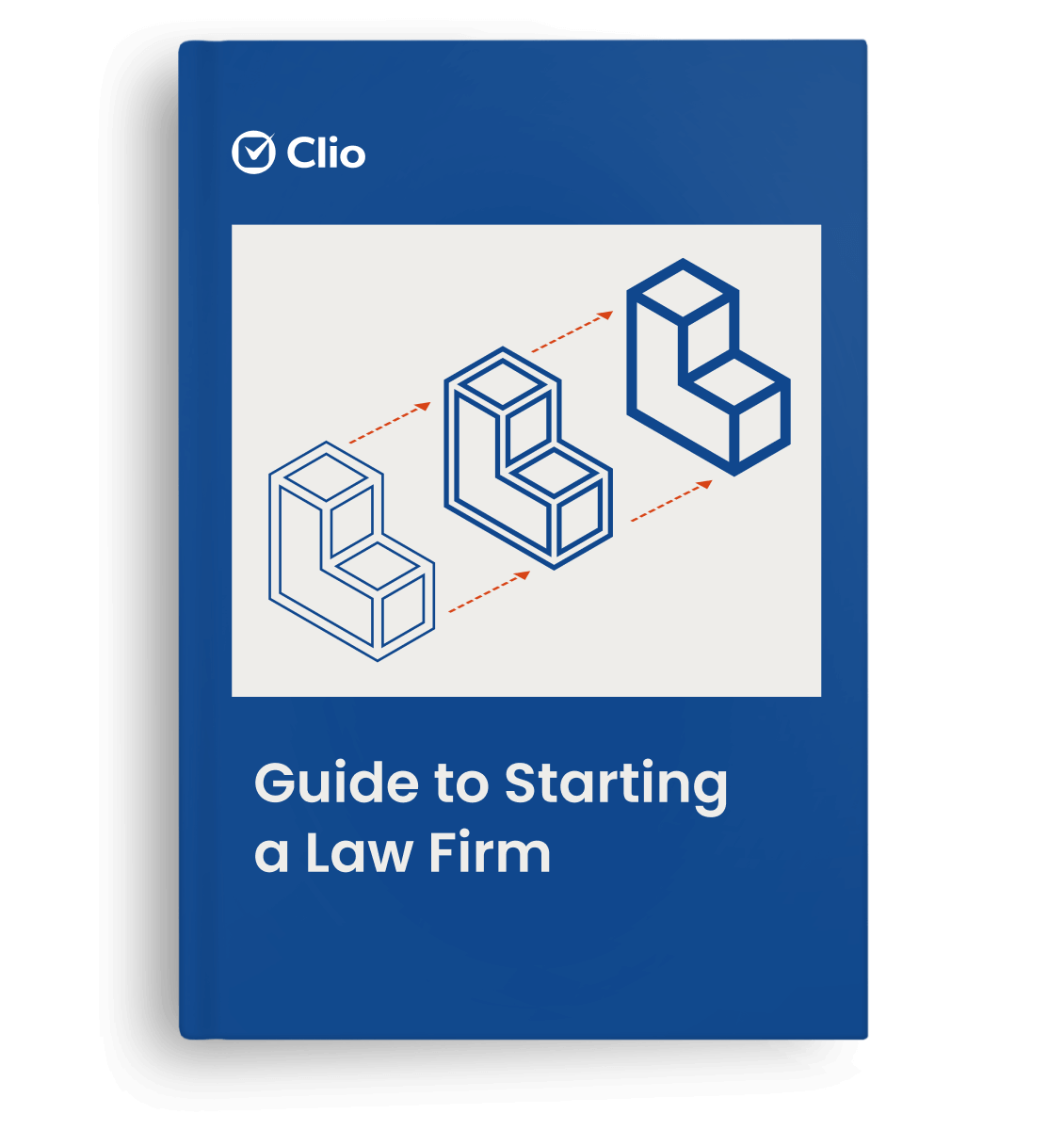Acquiring new business is one of the most challenging (and, often, expensive) aspects of running a successful law firm. It takes considerable effort to find and obtain clients and cases that align with your expertise, are manageable to your caseload, and are a good fit for your firm. Finding new business is time-consuming, too. According to the 2018 Legal Trends Report, legal professionals dedicate an average of 1.4 hours each day to networking to build referrals and meet new clients—and those hours can really add up.
Considering the time and effort it takes to find and acquire new clients on your own, accepting client referrals from other lawyers can be a powerful and valuable tool for growing your practice.
Why attorney referral fee agreements are key
Building strong relationships with other lawyers can be a lucrative source for finding new clients, and generating more income for your firm—but it’s often not enough to simply send clients back and forth.
Depending on your jurisdiction, there may be strict rules on how you can earn and refer business between law firms—and on how you compensate each other via substantiated referral fees. The ABA rules generally prohibit lawyers from paying others for recommendations—unless these payments align with exceptions under Rule 7.2(b).
Writing a formal agreement helps establish relationships and ensure transparency in the event of a regulatory dispute. A formal referral fee agreement will also help you navigate the rules of how you pay referral fee amounts with respect to case earnings.
Here, we’ll explore how to build an attorney referral fee agreement, so you can share referrals (and new business) amongst attorneys. We’ll look at the risks of getting a referral fee agreement wrong, the types of rules may apply to your referral agreement, and the steps to take before paying a referral fee to another lawyer.
Beware of getting referral agreements wrong
When it comes to referral agreements, it’s not as simple as writing a check or paying out of pocket—especially if you’re acting ethically and in accordance with the ABA Model Rules of Professional Conduct. Creating a specific, written referral agreement that follows the ABA rules allows you to outline the fees and division of labour and responsibility between lawyers from the get-go. This lets you map clear expectations and roles between all parties—the referrer, the referred, and the client—helping to prevent miscommunication or confusion within a case moving forward.
It’s also important to check with local regulators for specific rules on building referral agreements in your jurisdiction—as they may vary depending on where you practice. By not knowing the rules for your area, you risk unknowingly accepting or paying referral fees that aren’t permitted. For example:
- Some areas may allow referrals only between lawyers, while some may limit non-lawyer referrals to approved sources.
- Some jurisdictions may allow non-lawyer referrals, but may place heavy restrictions on their setup.
Provided you’re practicing in a jurisdiction that allows referral fees, there’s a proper way to create an agreement—and failing to follow the rules can lead to negative consequences for your practice and your reputation.
You may like these posts
Rules to consider in building an attorney referral agreement

If you’re planning on sharing referrals amongst attorneys—and your jurisdiction allows for referral fees—it’s important to consider the rules for how to build an attorney fee referral agreement the right and ethical way.
In general, the ABA rules prohibit lawyers from paying others for recommendations—unless these payments align with exceptions under Rule 7.2(b). The rule includes allowances for referral services formally approved by regulators, and, among other considerations, the rule also requires that referral arrangements not conflict with any other Model Rules.
When structuring referral agreements in accordance with Model Rules, lawyers should look to Rule 1.5(e). As per this rule, referral agreements are typically built on the sharing or splitting of earnings based on work contributed to a case.
When building a referral agreement in accordance with Rule 1.5(e), be sure to account for these essential components:
- A shared fee must be proportional to the work performed (otherwise, both lawyers assume joint responsibility).
- The client must provide written consent to the sharing of fees, including the proportion of disbursement that the referring attorney receives.
- The fee shared must be reasonable.
Consider the following steps when building a referral agreement with another lawyer:
- Ensure that you have a written agreement with the partner law firm.
- Decide (and state in the written agreement) how fees will be split—this could be either by proportional earnings or joint representation.
- Acquire the express written consent of the client agreeing to shared fees and how they are divided.
- Verify that the agreement states who is the primary billing law firm for the client.
- Determine how billed labor will be reported to each law firm:
- Fee Allocation Report.
- Submitted timesheets.
- Joint timekeeping records via Clio for Co-Counsel.
- Accounting to be completed at the time of referral.
- Check if your law firm’s trust account can record client trust deposits and disbursement of shared fees.
Rules for non-lawyer referral agreements
Non-lawyer professionals in your network may also be valuable sources for earning new clients. But, it’s important to consider rules around exclusivity and agreements.
Specifically, Rule 7.2(b)(4)(i) stipulates that referral agreements may not be exclusive, and Rule 5.4 prohibits lawyers from sharing fees with nonlawyers.
In other words, if a real estate lawyer refers a client to a realtor, the referral cannot be exclusive, and the lawyer cannot receive any payment beyond reciprocal referrals.
Allocating attorney referral fees
Beyond stipulations around referral agreements themselves, lawyers must keep detailed and transparent records on all shared or split fees, which can create burdensome logistical challenges.
For example, in accordance with the ABA’s Formal Opinion 475, when money paid is subject to a referral agreement between lawyers, that payment must be deposited into a trust account, separate from the receiving lawyer’s own property, before being paid out to any other lawyer.
Aside from safeguarding the money, notifying the other lawyer of the payment, and promptly delivering the amount owed, the receiving lawyer must also be able to provide a full accounting of the earnings.
While the logistics can be challenging, tracking them doesn’t need to be. To get a better handle on how to disburse funds, Clio’s Fee Allocation Report offers a useful means to quickly assemble detailed information on matter earnings and show what amounts should be paid to each contributing lawyer. Lawyers from different firms can easily consolidate their time entries through Clio for Co-Counsel to share a matter between firms at no additional cost.
Should you pay attorney referral fees?
Deciding whether or not to pay attorney referral fees can be tricky. Following the rules requires transparency and agreement with the client—can become complicated, and potentially cause conflict, when money gets involved with fellow lawyers.
If the rules for paying attorney referral fees are too strenuous (or if your jurisdiction does not allow for paid attorney referrals), you may also want to consider giving and getting referrals for free, as this is still valuable for building relationships and creating streams of new business for your firm.
Referrals are an excellent way to offer clients better service when your firm isn’t the best fit at the time—and they’re also a way to acquire new business from other firms. Whether you choose to join a free referral network or engage in attorney referral fee agreements, take time to understand the rules so you can ethically share referrals with other attorneys.
Note: The information in this article applies only to US practices. This post is provided for informational purposes only. It does not constitute legal, business, or accounting advice.
We published this blog post in February 2017. Last updated: .
Categorized in: Business







